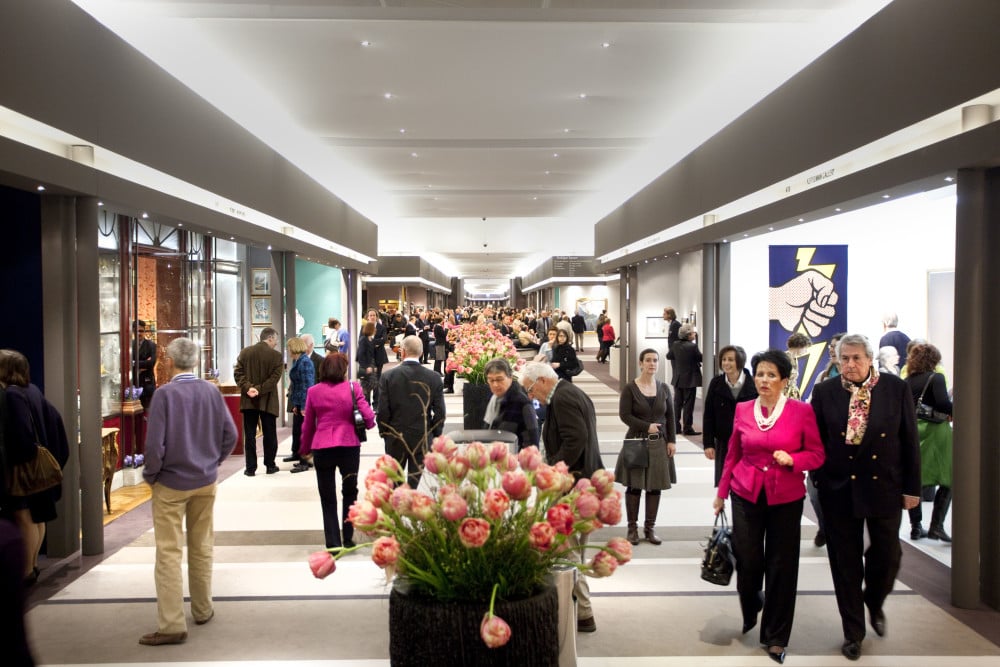Art Fairs
TEFAF Art Market Report Says 2013 Best Year on Record Since 2007, With Market Outlook Bullish
The 10 Conclusions from this Year's TEFAF Art Market Report You Need to Know

The 10 Conclusions from this Year's TEFAF Art Market Report You Need to Know

Alexander Forbes

The global art market outlook for 2014 is extremely bullish, according to the latest TEFAF Art Market Report published today by the European Fine Art Foundation. Prepared by Dr. Clare McAndrew, the much anticipated annual report tracking global art market movements says 2013 was the best year on record, other than 2007, and only just shy of that year’s record totals. The report confirms the flagging Impressionist and Modern art market of recent years, with Post-War and Contemporary sales continuing to dominate the market.
Here are 10 of the key conclusions from the Report:
1. The market is stronger than ever (almost)
The global art market grossed €47.42 billion in 2013. That represents a 7.5% increase by value over 2012 and the second most prosperous year on record for the industry. Only 2007 yielded a higher total, with €48.07 billion in output, only €646 million more than 2013. Transaction volume is however lower than prerecession levels (and lower than 2011), meaning that artworks are selling for marginally higher prices than they were in the prerecession years rather than industry capacity having expanded.
2. The US is still the most dominant, most quickly growing, and richest force in the art market
The United States maintained its 20-year-long hold at the top spot of the art market. Value of the US market increased 25% year on year, the fastest of any country or region. And its global art market share increased to 38%. The country also remains at the top of the wealth spectrum, having 42% of millionaires worldwide.
3. China may still be world #2, but diminishing growth means one might want to look elsewhere if trying to ride the emerging market rocket ship
China clocked in at 24% of global share of the art market in 2013, representing €11.5 billion in sales. €7.5 billion of those sales came from auctions, 71% of which took place on the mainland. However, buyers were not as gung-ho as in previous years, with the art market seeing only 2% in growth for 2013 over the previous year. Buy-ins also remain high at 53%.
4. The EU is still a safe (if a bit boring) bet
Growth in the EU remains tepid. It was the only region to post a loss for 2013 with market share by value, falling 3% from 2012, but still holds on to 32% of the global market. Sales in France and Germany bucked that trend, rising 13% and 11% over sales in 2012, respectively. Southern Europe, still recovering from the euro crisis, saw more slack or negative growth.
5. The UK takes a good share of that blame
Far and away the largest contributor to EU market power, at 63% of the art market value created by the economic region, the UK’s fall of 5% in total year-over-year sales was a major contributor to the 2% EU decrease according to the report.
6. Buy (relatively) young art
The report confirms the flagging Impressionist and Modern market of recent years. Post-War and Contemporary sales continue to dominate the market, representing 46% of sales by value and 44% by volume. The sector’s market value grew 11% in 2013.
7. Fairs are still important, but not quite as much so as in recent years (It’s getting too expensive to participate!)
According to dealers, fairs are retreating from their height of dominance. Fair sales fell 3% from 2012, representing 33% of dealer sales overall. Fairs represented the second biggest expenditure within the art market, coming in behind advertising expenses, at €1.9 billion. Gallery sales accounted for 50% of dealer balance sheets, up 6% from 2012.
8. There’s a reason for all those online art sales start-ups
TEFAF estimates that online sales within the art market could top €10 billion by 2020, growing at a projected annual rate of 25%. Online sales currently only make up about 5% of the total global art market or around €2.5 billion.
9. The art market has never been more international
Art and antiques exports rose 25% to an all time high of €18 billion. Imports worldwide also hit a new record of €17.6 billion, a 19% increase.
10. Keep your head on your shoulders, but there’s still room to grow
However promising these results may be, don’t lose sight of the fact that the art market is still a minute industry. According to the latest Forbes rich-list, Bill Gates, Carlos Slim Helu, Amancio Ortega, Warren Buffett, and Larry Ellison could each buy the entire year’s global art output and still have between one and 29 billion to spare. More than 600,000 millionaires worldwide seriously collect art, a figure that represents only 2% of the global millionaire population. However, art remains the third most favored “Investment of Passion” with high net-worth individuals allocating an average of 17% of their wealth to purchases of art and antiques. With the wealth of these individuals growing at a much higher rate than that of the population at large, the consumer base for art remains strong for the foreseeable future.